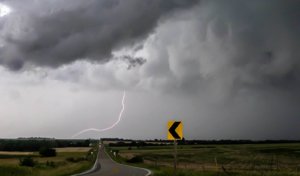Bumping this thread with some updates. Sony is coming out with two 3-CMOS 4K cameras in the more classic prosumer form factor this summer and fall, the PXW-Z280 and PXW-Z190. These are actually the first 3-chip 4K prosumer cams. The PXW-Z280 has 1/2" chips which should perform nicely in low light, but it is priced at $7,000. The PXW-Z190 has smaller 1/3" chips and will be around $4,000. That camera might be a good fit for general chasing use, though that is pretty pricey for a casual-use camera these days. It remains to be seen how the rolling shutter and low light performance will stack up. It won't be perfect, but should be better than most of the previous offerings. We may see some other manufacturers follow suit to answer Sony with comparable offerings, so keep an eye out this fall and winter.
The Sony a7s II and III have been out for a while and both do great low-light 4K video, but since they use still camera lenses will be harder to use on the go and handheld. They also have really bad rolling shutter, some of the worst among 4K cameras. The lightning video I've seen from the a7s series cameras is suffering 3 or 4 splits in the frame instead of the usual one or two, pretty atrocious:
This is because the chip scan speed is limited by the low heat dissipation capacity of the tiny camera casing. (With 4K video, you really want a bigger camera that can accommodate bigger heat sinks.) There are reports that the a7s can overheat if shooting continuous 4K for too long.
The Blackmagic Ursa Mini 4K is the only global shutter 4K camera under $10,000. Right now it runs $3,000 for body only, another $400 for a memory card (Fast CF 2.0), another $250 for battery and of course it doesn't come with a lens. The upside is that it does have autofocus and uses EF mount Canon lenses. So for $4,000, you can have global shutter 4K using your Canon DSLR lenses. The Ursas have had some reliability problems and are prone to banding artifacts in low light. They are basically the poor man's RED.
If the ENG/stock video market was still going like it was 10 years ago, I'd probably be buying both the Ursa and the new Sony Z190, using one for lightning and the other for everything else. As it stands now I'm not bringing in revenue to fund barely one of those, much less both.
The popularity/demand right now in terms of lightning is for slow motion, but the best you are going to get under $10,000 with 4K is 60fps with a rolling shutter CMOS. There are some nice 240fps HD options though. To get 1,000fps in 4K, the only option is the $100,000 Phantom Flex4K. Slow-motion 4K will not be affordable for prosumer types for quite a while.
On top of all of this, several 8K cameras are now available (priced at/above $80,000 at the moment), and now a $9,000 8K TV (the first-generation prototype one was $100,000). Those prices will fall fast in the coming years. Who knows where things will be in 5 years. 4K could be outdated in 6-8 years, in less than half the time it took for HD cameras to get bumped by 4K. The tech advancement is moving too fast to recoup investment in cameras and footage acquisition costs for "prosumer at best" users like us.
https://fstoppers.com/originals/cheapest-package-shoot-8k-video-hint-its-not-cheap-210601
